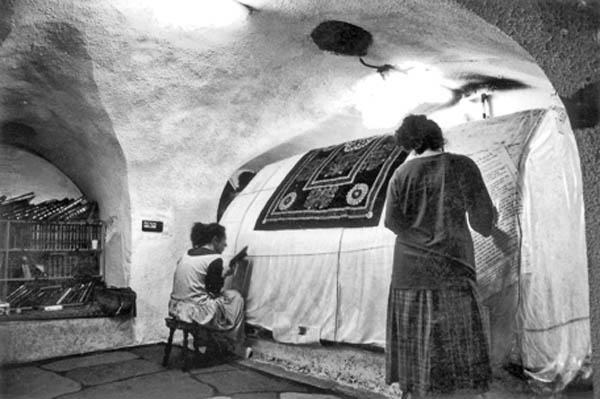Image Details

Shlomi Amami
SAMUEL’S FINAL RESTING PLACE? In a small vaulted cave below the Nebi Samwil mosque lays the purported tomb of the prophet Samuel. Since the 15th century, both Jews and Muslims have identified the site as Samuel’s burial place. This photo, taken only a few years ago, shows two Jewish women praying over the cloth-covered cenotaph of Samuel. Only Jews visit the cenotaph in the cave; Muslims pray in the mosque above. This veneration is geographically misplaced, however. The cave was carved out no earlier than the Crusader period and was probably intended as a crypt for church dignitaries. More important, when the monastery of St. Samuel was built in the sixth century, Christian tradition recorded that Samuel had originally been interred in his hometown of Ramah, several miles away. Thus, the monastery must have been built to commemorate the site of Mizpah, where Samuel gathered “all Israel,” not to house the prophet’s tomb.
